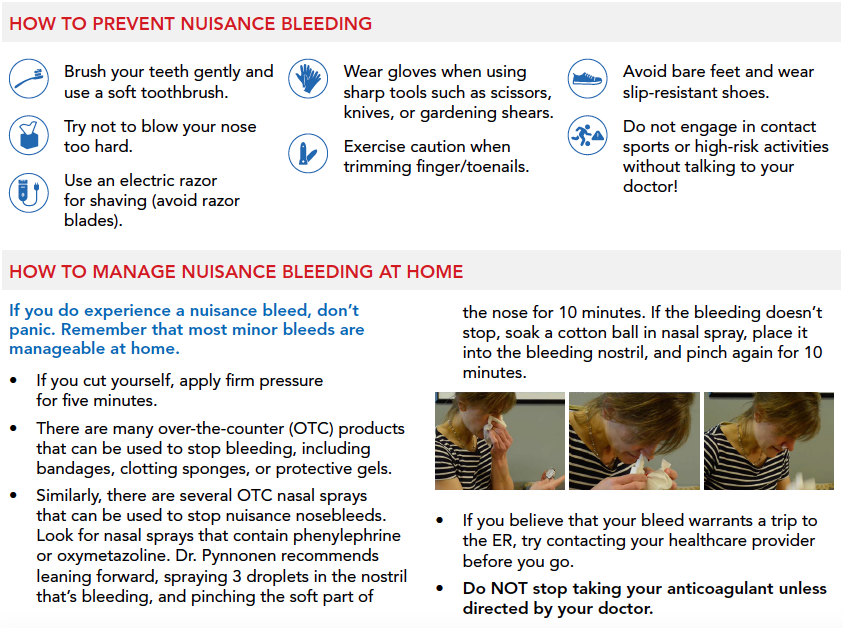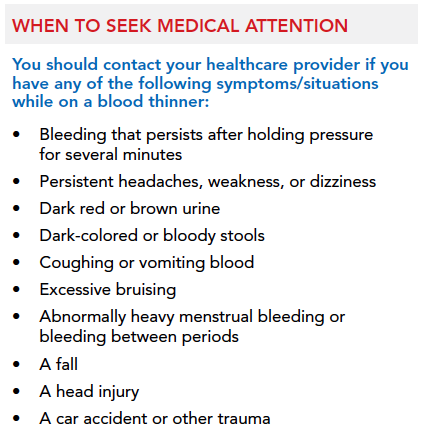Last updated on
When Bleeding is a Nuisance
Anticoagulants (blood thinners) can be lifesaving if you have atrial fibrillation (Afib) or a history of blood clots. They’re also widely used to prevent clots in patients who are hospitalized or undergoing surgery. But like all medications, they have side effects. Although rare, anticoagulants can cause fatal bleeding (such as a brain bleed) in some patients. More commonly, patients may have minor bleeding while on a blood thinner.
Nuisance bleeding—including nose bleeds, bleeding gums, bruising, or minor cuts—is common in patients on anticoagulation but usually isn’t life-threatening. Although most nuisance bleeds can be managed at home, it’s reported that more than half of emergency room visits in anticoagulated patients are related to nosebleeds, minor cuts, etc. Nuisance bleeding is also a key culprit when patients stop taking blood thinners, and the choice to stop anticoagulation is often made without consulting a healthcare provider. According to the Michigan Anticoagulation Quality Improvement Initiative (MAQI), “…patients rarely contact a provider about the minor bleed before going to the emergency room…and minor bleeds can prompt patients to stop anticoagulant therapy, even though guidelines support continued anticoagulation.”
“Stopping blood thinners can lead to a blood clot in the legs (deep vein thrombosis, DVT) or the lungs (pulmonary embolism, PE), or to a heart attack or stroke. All of these conditions can be fatal, which is why patients should never stop their anticoagulant medication without speaking to their doctor,” says Dr. Melissa Pynnonen, a Professor of Otolaryngology and Medical Director at University of Michigan who specializes in nuisance bleeding. If you take an anticoagulant, there are several steps you can take to prevent and manage nuisance bleeding. It’s also important to know when to seek medical attention (See below).
Outside of medical emergencies, following commonsense practices and taking your anticoagulant as directed can help you stay safe and avoid blood clots.
Interested in learning more about nuisance bleeding? Check out our June Patient Pulse webinar. Dr. Pynnonen joins us for a more in-depth overview on epistaxis (nosebleeds) and offers step-by-step video instructions on stopping and managing nosebleeds at home.

Dr. Pynnonen is board certified in otolaryngology and has clinical expertise in acute and chronic sinusitis, tumors involving the nasal cavity and sinuses, and treating epistaxis (nuisance nosebleeds). Her research is focused on understanding the determinants and consequences of medical uncertainty in health care.





